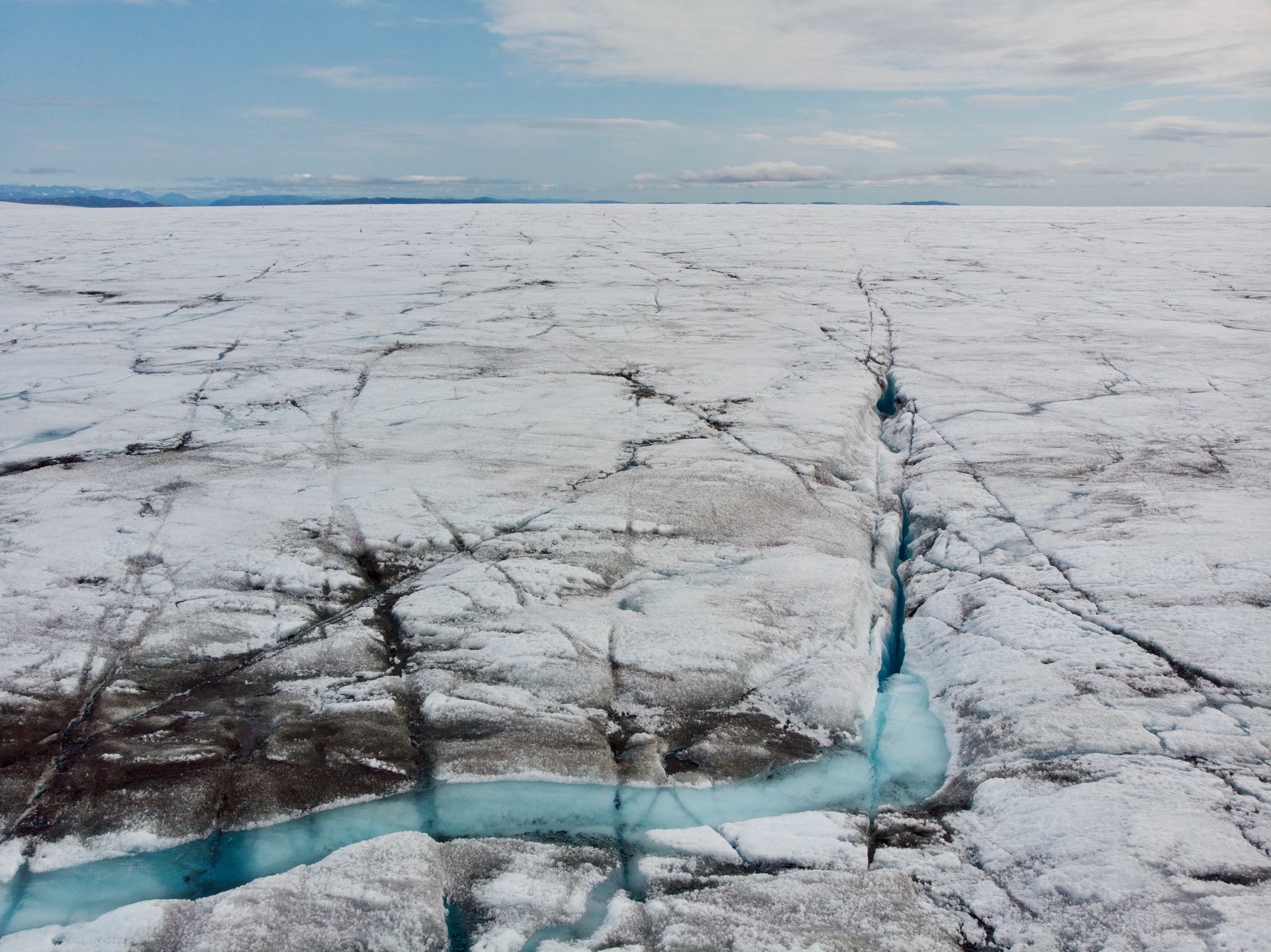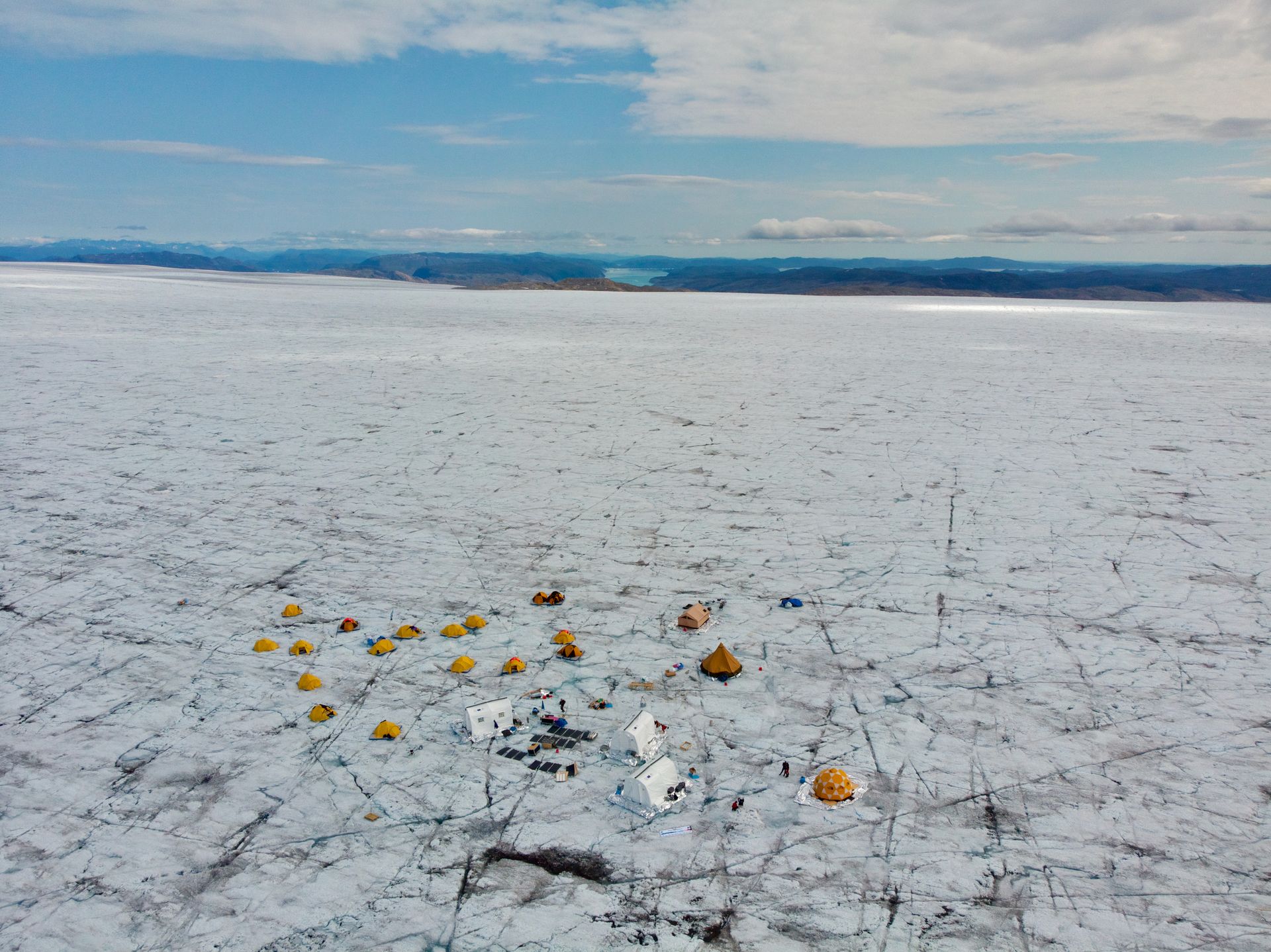Researchers discover novel dynamics in the carbon cycle of glacial environments
February 20th, 2025
As the Greenland Ice Sheet melts, it releases dissolved organic matter into the Arctic environment. This material influences carbon cycling, microbial ecosystems, and even the chemistry of downstream rivers and oceans.
But what happens to this dissolved organic matter as it moves through the ice before reaching the ocean?

.
Action within the ice
A new study, led by Eva Doting and co-authored by iC3 researcher Jon Hawkings, reveals surprising insights into the hidden chemical transformations taking place within the ice itself.
The study focuses on a small, hydrologically connected catchment on the surface of the Greenland Ice Sheet. Using advanced mass spectrometry techniques, the researchers traced how dissolved organic matter (DOM) changes as it moves from surface ice, through a porous melt layer known as the weathering crust (~0 to 2m thick, depending on weather conditions), and into supraglacial streams.
.
Hidden dynamics within the weathering crust
The weathering crust, a layer of partially melted ice crystals at the surface of glaciers, is often overlooked in glacial studies. Yet, this study shows that it plays a crucial role in transforming DOM.
The researchers found that as meltwater percolates through the weathering crust, the DOM in the meltwater undergoes microbial processing and is exposed to sunlight, breaking down complex molecules into simpler, more biologically available forms.
The study found a clear pattern:
- Aromatic compounds decreased in abundance as meltwater moved from surface ice through the weathering crust and finally into supraglacial streams. This suggests that sunlight breaks down DOM molecules in more biologically available forms before leaving the ice sheet.
- Aliphatic and peptide-like molecules, which are more easily used by microbes, were more abundant in the weathering crust than in streams, indicating that microbial communities in the crust are actively consuming and altering the DOM before it is flushed downstream.
- Surface ice particulate matter—dust, microbes, and other debris trapped in the ice—was identified as a previously unknown source of bioavailable organic matter.
“Our findings suggest that the weathering crust is not just a passive layer but an active processing zone,” says Eva Lisa Doting. “This has major implications for how we understand biogeochemical cycling in supraglacial environments.”
.
Why this matters in a warming Arctic
In the future, the weathering crust will likely play an even larger role in processing organic matter before it reaches the ocean.

As the climate warms, snow is being removed faster and to a greater degree on the surface of the Greenland Ice Sheet, the bare ice areas are expanding, and rainfall events are becoming more frequent.
Jon Hawkings, who has studied the export of DOM from glaciers for years, explains:
“We know that glaciers release both ancient and modern carbon, but this study highlights the importance of processing on the glacier surface before that carbon reaches downstream environments. This surface processing appears to make that carbon more accessible to microorganisms.”
The study highlights the need for further research into how these changes might affect Arctic ecosystems and global carbon cycling.
.
Further reading and author contacts
The full study, “Molecular-level characterization of supraglacial dissolved and water-extractable organic matter along a hydrological flow path in a Greenland Ice Sheet micro-catchment”, is published in Biogeosciences and can be accessed here.
Lead author Eva Lisa Doting is a postdoctoral researcher at the University of Pennsylvania, studying the cycling and export of organic matter, nutrients and trace elements from glaciers and ice sheets to downstream ecosystems. List of publications here. She took the photos in this post.
Jon Hawkings is a researcher with the iC3 Polar Research Hub specializing in glacial biogeochemistry and the role of ice sheets in global nutrient cycles. He welcomes enquiries from researchers who want to apply for an MSCA postdoctoral fellowship with him this year. List of publications here.